Titusville, FL – The Home of Rock Shrimp
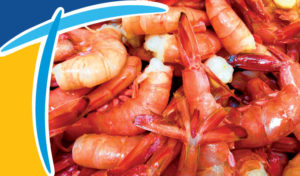
The Keys have lobsters, Monroe County has Stone Crab Claws, Tarpon Springs has sponges, Cedar Key has clams and Titusville has rock shrimp. If you love seafood, especially Florida seafood, you understand how important seafood is to the history and culture of these cities and towns. Titusville is one of those cities. Titusville is synonymous with the words rock shrimp because it is where Rodney Thompson, rock shrimping pioneer lived and started the fishery. Here is a little story of how it began:
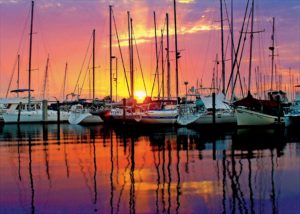
“Always ask how, not why” is a philosophy entrepreneur Rodney Thompson took to heart. Rodney Thompson was the founder of Cape Canaveral Shrimp Co (DBA Wild Ocean Seafood Market) and Dixie Crossroads and he pioneered an incredible fishery – the Rock Shrimp fishery. Rodney never questioned why an idea failed; he would always figure out a way to make the failure work. Amazingly, his journey into the seafood business – and the Rock Shrimp Story – began not on a shrimp trawler, but through his early experiments fabricating boats out of fiberglass in Titusville. Back in the 1960’s, Rodney’s company, T-Craft Boat Company, was one of Florida’s premier boat builders. It was based in Titusville. At a time when conventional wisdom said wood was the best material for the job, Rodney began experimenting with fiber-glass hulls. First, he designed and constructed his own racing boat, then applied what he learned to build recreational boats that were sold nationwide. Never being satisfied with status quo, he moved on to bigger and grander dreams and built the Western Hemisphere’s first fiberglass shrimp trawler, the R.C. Brent Jr, in 1968 Rodney was certain that shrimpers would embrace this new fiberglass hull, but the old-timers weren’t convinced. He could not find a buyer for this revolutionary vessel. To make ends meet, he switched hats from boat builder to fisherman and set out to prove the worthiness of his boat. But the “how” still eluded him – and he couldn’t catch enough brown or white shrimp to turn a profit.
One afternoon, Rodney and his crew happened to pull into Port Canaveral – empty handed again – right next to the National Oceanic and Atmospheric Administration’s Research Vessel, Oregon II skippered by a Captain Barrett. Captain Barrett looked at the trawler’s empty nets and asked “Do you want to make a million dollars? I’ll show you how!”
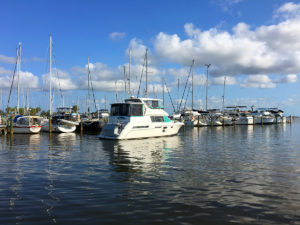
The very next day, Rodney and his crew followed the Oregon II to a location twenty miles off the coast of Melbourne where they caught over a thousand pounds of a hard-shelled shrimp called “peanuts” (also called “trash” or “hardheads”). “Captain Barrett told Rodney “If you can figure out how to sell these, you’ll be a millionaire!” Rodney knew Captain Barrett was right; he just had to find out “how.” Pondering his “peanut predicament,” Rodney and his family spent many nights around the kitchen table working to solve this puzzle. Lo and behold, one of his daughter’s, suggested they treat it like a small lobster: split and butterfly, then little peanuts and drizzle them with a little butter.
They were delicious – and a whole new industry was born! Rodney went on to develop the first splitter able to process this hard-shelled shrimp. It’s the basis of the same machine still used today at Wild Ocean where they hand-process chemical free “Split & Cleaned Rock Shrimp”.
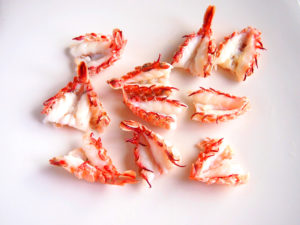
While Rodney’s discovery did not lead to “millionaire status,” his first shrimp trawler opened up an industry that introduced many independent boat owners to a new, clean, sustainable type of shrimp to harvest. Rodney continued his production of fiberglass commercial fishing vessels under the name of Thompson Trawlers. The fiberglass boats eventually became widely accepted and are still fishing the waters in the U.S. and Caribbean.
An economic downturn in the late 70’s brought the proverbial “how” back again. Commercial boat sales evaporated, and Rodney was faced with moving on. He opened a seafood market and found that everyone wanted their seafood cooked for them. From his cooking experience in the Air Force, the world-famous Dixie Crossroads Seafood Restaurant evolved from a small seafood market to a place where patrons could have local-caught seafood dinners made to order.
Now in its fourth decade of operation, Dixie Crossroads has become an icon on the East Coast of Florida. After 24-plus years serving some of Florida’s best seafood, Rodney & MaryJean were ready to pass the torch on to their daughters. Laurilee stayed with Dixie Crossroads. Sherri, like her Dad, had the vision to partner with another family and develop Wild Ocean Seafood Market featuring premium, wild-caught seafood from Florida. One of the last boats Rodney built still fishes for Wild Ocean Seafood Market.”
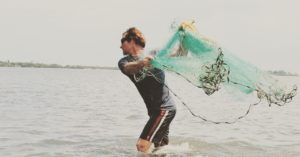
It’s really amazing to see how one man’s perseverance created a whole fishery. Rodney Thompson was also instrumental in transforming the Oculina Reef, a spawning ground for rock shrimp, into a Marine Protected Area. Aside from rock shrimp, Titusville gives you access to the Indian River Lagoon, which is home to over 600 species of fish. The Indian River Lagoon is home to redfish, black drum, speckled sea trout, pompano, whiting, mullet, mangrove snapper, invasive tilapia, sheepshead, grunts, flounder and so much more. Aside from catching recreational seafood, you can also buy them at the local seafood market, Wild Ocean Seafood Market, where you can ship it out to your home. Imagine having all those species accessible to you especially in a time where more than 80 percent of all seafood consumed in the USA is imported. Titusville is a gem for seafood. If you drive around the coast, you will see it yourself; there are very few fish houses left and even less seafood markets that specialize in local seafood. Once again, Titusville is a gem for not only having a seafood market that specializes in local seafood but also a restaurant that is committed to that local seafood. Let’s not even get started that it houses the only hand-processing shrimp facility in the Southeast (Wild Ocean, that is).
Sidenote:
Tips from a Fishmonger on how to choose your seafood and keep it fresh:
- Smell, smell, smell – Make sure to smell your seafood. It should not have a strong “fishy” smell. It should smell like the body of water it was caught in.
- The bloodline on a fish fillet should be a bright red or maroon red and not watered down or brown.
- If you see both a fillet and a whole fish, try to purchase the whole fish since you can better tell if the fish is fresh that way. Ask to smell the gills on it. The gills should smell like the body of water it came from.
- Do not go into the fish market with a certain species in mind, try to be flexible, that way you will purchase the freshest fish, not the one that you have your heart set on. Often people make the mistake of not being flexible and they miss out on very, very fresh fish.
ABOUT THIS STORY:
Stories & Adventures wishes to thank Cinthia Sandoval at Wild Ocean Seafood Market for writing this blog about the history of rock shrimp in our area.
All photos courtesy of Cinthia Sandoval and the Titusville Area Visitors Council.








